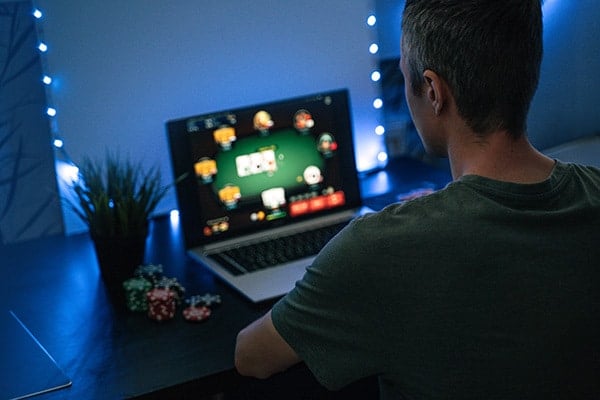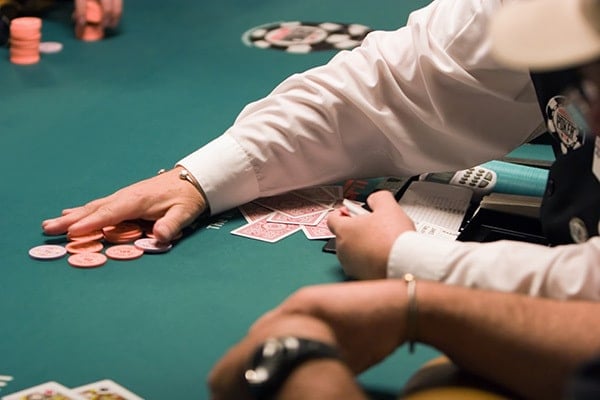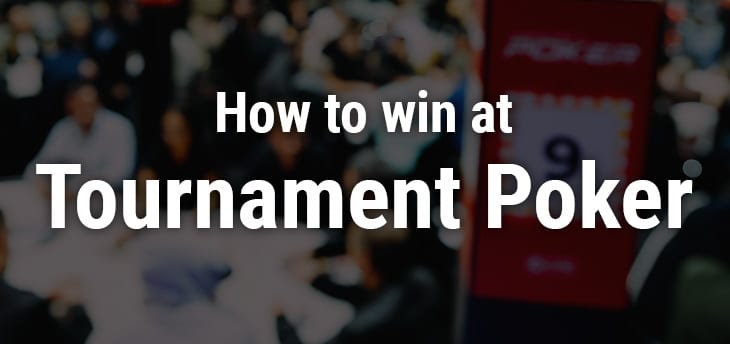The title of this article implies that you are already a tournament player who understands the difference between cash games and tournament poker. You are here to discover ways to improve and achieve the ultimate goal of winning in tournament poker. So, if you are new to multi-table tournaments (MTT) poker or have been playing tournaments for a while without the expected results, this article could be just what you need.
While there is no right or wrong way to play poker, there are methods to maximize your profit. I will share some strategies and tips to help you become a winning player. Before delving into tournament strategies and tips, it’s important to understand the different formats of each type of tournament. Here are some of the most popular ones:
- Freezeout tournaments – A tournament wherein once a player runs out of chips, they are out.
- Rebuy tournaments – When a player loses all of their chips, they can buy more until a predetermined time.
- Satellite tournaments – A low buy-in tournament that, instead of winning money, the players win entry to a big buy-in tournament
- Bounty tournaments – A tournament where a portion of the prize pool is set aside as a reward for knocking out other players.

You should always learn strategies that apply to the formats you are playing, as each of them requires a different approach compared to others. To put things into perspective, let’s compare freezeout poker tournaments and satellites.
In freezeout tournaments, the payouts are heavily weighted towards the top, so skilled players always aim for the win instead of trying to climb the ladder. On the other hand, satellite tournaments distribute prizes in the form of equal-value tournament tickets for the top spots. Skilled players preserve their stack and avoid high-variance plays in these tournaments since there are no additional incentives to secure first place, as the rewards are the same.

Now, let’s discuss a general strategy that applies to most tournament formats:
- Start Slowly: In the early stages of a tournament, play tight. The blinds are low, so there’s no need to be aggressive. Remember, you can’t win all the chips in one hand, so it’s wise to wait for good hands.
- Position: Understand when you are in an advantageous or weak position and adjust your play accordingly. If you’re extremely short-stacked, conservative play is a must. If you have a big stack, you’re in a great position to leverage it against your opponents, knowing that they can’t fight back without making critical mathematical errors. However, you should avoid unnecessary confrontations with other big stacks, which can lead to disaster in tournament poker.
- Middle Stages: Once you’ve survived the early stages of a poker tournament, it’s normal to play more loosely. This is the stage where you either make or break your stack.
- Patience: One of the biggest mistakes beginners make is building a large chip stack and then squandering it needlessly while trying to win the tournament too early. Patience and discipline are key in large field events if you want to emerge victorious.

- Do Not Over-Bluff: Bluffing is a useful strategy in poker tournaments, but excessive bluffing can be detrimental. Many players mistakenly believe that bluffing is necessary to win, but in reality, playing straightforward games is often more effective, especially for newer players.
- Be Aggressive: Aggressive poker is often winning poker, but you must know when to be aggressive. Effective use of aggression is one of the best skills to learn, but it requires study and practice.
- Late Registration: Avoid late registration in tournaments whenever possible. When you register late, your stack will be smaller due to blinds being paid, thus reducing your advantage over opponents. If you register late, you may find yourself needing to win one or two hands immediately, and if those flips don’t go well, you’ll be eliminated quickly. Avoid using late registration as a strategy to fire multiple bullets, as it is not wise nor beneficial for newer people.
- The Bubble: This is the point in a tournament where the next player out does not receive any winnings but the remaining players will take home a portion of the prize pool. There are two main strategies for the bubble stage:
– Survival: Some players will prioritize surviving, ensuring they take home winnings.
– Playing to Win: Other players adopt an aggressive approach, aiming to accumulate more chips and win the tournament.
- The Final Table: The final table of a poker tournament offers a dramatically different experience than the rest of the tournament. While most big tournaments guarantee a decent payday for all final table players, a significant portion of the prize pool is often dedicated to the top three spots. Keep this in mind as the final table plays out. Pay attention to pay jumps; if there is a notable pay difference between the next finishing places, and a player with a very short stack remains, take your time and hope they bust. Keep your focus on the ultimate prize.
- Heads-Up Play: Heads-up poker is the most intense form of poker. Every hand is crucial because there are only two players left. Folding every hand is not an option, as the blinds will quickly deplete your stack. Instead, play more aggressively and open with a wider range of hands. One effective way to practice heads-up play is by participating in heads-up sit & go tournaments.
In conclusion, Texas Hold’em takes a minute to learn and a lifetime to master. To become a better player and gain an edge in any tournament you play, you must be willing to invest time studying and practicing every aspect of the game. Results will come with practice. Good luck at the tables, have fun and gamble responsibly.
-jackpot

